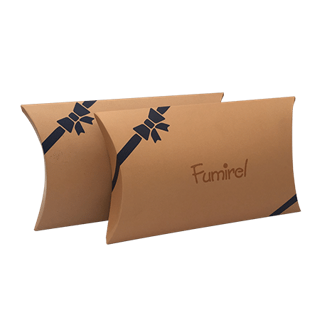
Pillow boxes are a popular choice for packaging due to their unique shape and stylish appearance. But as the world moves toward sustainability, many are asking—can pillow boxes be recycled? In this material guide, we’ll explore everything you need to know about the recyclability of pillow boxes, the types of materials used, and how to dispose of them in an eco-friendly way.
Understanding the Common Materials Used in Pillow Boxes
Most pillow boxes are made from paperboard, kraft paper, plastic, or a combination of these materials. The type of material used plays a major role in whether or not the box is recyclable.
Paperboard pillow boxes are the most eco-friendly. They are made from thick paper that can usually be recycled just like cardboard. Kraft paper boxes, made from unbleached pulp, are also highly recyclable and biodegradable. They often have a rustic look and are favored for eco-conscious branding.
Plastic pillow boxes, however, are less environmentally friendly. These are often made from PVC or PET plastics. While PET is recyclable in many local recycling programs, PVC is not. Moreover, if the plastic has been treated with certain finishes or coatings, it may reduce its recyclability.
Some pillow boxes are also laminated with a glossy or matte finish. This lamination can make recycling more difficult. The same applies if the box includes metallic foiling or heavy ink usage.
To sum up:
Paperboard and kraft paper are widely recyclable.
Plastic (PET) can be recyclable, depending on local facilities.
PVC and laminated boxes are generally not recyclable.
Knowing what your pillow box is made of is the first step to responsible disposal.
Tips for Choosing Eco-Friendly Pillow Boxes for Your Brand
If you're a business or brand, the type of packaging you choose matters. Eco-friendly pillow boxes not only help the planet but also build trust with your customers.
Here are tips to choose greener options:
Go for recyclable materials: Choose kraft paper or paperboard.
Avoid plastic and heavy lamination: These limit your recycling options.
Use minimal inks and coatings: Water-based inks are best.
Pick certified sustainable materials: Look for FSC or recycled content labels.
Offer reuse options: Some pillow boxes can be repurposed for storage or gifting.
Brands that show care for the environment attract eco-conscious customers. It also helps reduce your company’s carbon footprint and waste production.
When sourcing, choose suppliers with green practices. For example, options from https://ibexpackaging.com/pillow-boxes/ offer customization while using recyclable materials.
These choices reflect responsibility and add value to your packaging.
How Laminations and Coatings Affect Recyclability
Laminations and coatings are added to pillow boxes to make them look better or last longer. But these features can reduce or block their recyclability.
Glossy or matte laminates are thin plastic layers glued to the surface. While they enhance appearance and protect the box from moisture and damage, they interfere with recycling. During recycling, paper materials are soaked and pulped. Laminates don’t break down easily and can contaminate the recycling stream.
Other coatings like UV or aqueous coatings also play a role. UV coatings are not easily recyclable because they harden the box’s surface. On the other hand, aqueous coatings are water-based and more eco-friendly, often accepted by paper recycling systems.
Boxes with metallic foiling or embossing may also be problematic. Though they look attractive, they introduce non-paper materials that disrupt the recycling process. If large parts of the box are covered in foil, recyclers may reject them altogether.
To stay eco-conscious:
Choose boxes with aqueous coatings instead of UV or laminated ones.
Avoid excessive foil or plastic decorations.
When in doubt, check with local recycling guidelines.
Understanding these small differences can help you make better decisions for the planet.
Sustainable Alternatives to Non-Recyclable Pillow Boxes
If you're looking to stay green, consider switching to sustainable versions of pillow boxes. These options are just as effective and attractive but much better for the environment.
Kraft pillow boxes are among the top eco-friendly alternatives. They are made from unbleached paper and break down naturally over time. Kraft paper is both recyclable and compostable, which adds to its appeal for eco-conscious brands.
Another great alternative is using recycled paperboard. These boxes are made from post-consumer materials and help reduce waste. They can be recycled again, depending on how they are printed and finished.
Seed paper pillow boxes are an innovative and biodegradable option. Once used, they can be planted into the soil. These boxes are embedded with flower or herb seeds and will sprout when watered.
There are also compostable bioplastics used in some newer pillow boxes. These mimic the clarity of plastic but decompose naturally under industrial composting conditions.
Switching to sustainable materials doesn’t mean sacrificing style or quality. Eco-friendly pillow boxes still offer:
Custom shapes and sizes
Branding options like printing and embossing
A premium feel without environmental harm
By choosing better materials, you help reduce landfill waste and support sustainable manufacturing.
Benefits of Recycling Pillow Boxes for the Environment
Recycling pillow boxes can have a large positive impact on the environment. It reduces the demand for new raw materials and lowers energy use in production.
Paperboard pillow boxes, when recycled, help save trees. For every ton of recycled paper, up to 17 trees can be saved. This helps preserve forests, which are vital for carbon absorption and wildlife habitats.
Recycling also saves energy. Producing paper products from recycled fibers uses less water and power than from fresh pulp. It also cuts down on harmful emissions.
Landfill space is another key issue. Packaging waste takes up a large share of landfill sites. By recycling pillow boxes, we reduce this waste and extend the life of landfills.
Here are a few environmental benefits of recycling pillow boxes:
Less demand for wood and raw materials
Lower greenhouse gas emissions
Reduced water and energy use in production
Decreased pollution and landfill waste
When more people recycle correctly, we move closer to a circular economy where products are reused, not wasted.
How to Tell If Your Pillow Box Is Recyclable
Identifying whether your pillow box is recyclable isn't always easy. But with a few tips, you can make the right decision.
Start by looking for recycling symbols. Most recyclable boxes have a number or triangle printed on them. Paperboard and kraft boxes often show the Mobius loop (three arrows) and may mention “100% recyclable.”
Next, feel the surface of the box. If it has a smooth, glossy coating, it may have lamination. You can also try the tear test. Paper tears easily, while laminated boxes are harder to tear and may show a plastic film.
Check for extras like plastic windows, metallic prints, or glued-on decorations. These features usually reduce recyclability.
Lastly, contact your local recycling center. Some centers accept laminated or lightly coated boxes, while others do not. They can give you clear guidance.
By taking a few seconds to examine your packaging, you can make more sustainable disposal choices.
Composting Pillow Boxes at Home or Commercial Facilities
If your pillow box is not recyclable, it might be compostable. Composting is a natural process where organic matter breaks down into nutrient-rich soil.
Kraft paper pillow boxes and those made from unbleached paperboard are usually compostable. They break down quickly when shredded and added to a compost pile.
Before composting, remove any tape, glue, or decorations. Tear the box into small pieces to help it decompose faster. Then, mix it with kitchen waste or garden clippings for balance.
At home, composting takes longer than in commercial facilities. Industrial compost sites use higher temperatures and controlled conditions to break down materials more quickly.
You should not compost laminated or plastic pillow boxes. These won’t decompose and will harm your compost.
If you're unsure:
Check if the box is labeled "compostable"
Look for certifications like BPI or OK Compost
Reach out to a local compost service
Composting is a great way to handle pillow boxes that are not suited for recycling.
Challenges in Recycling Mixed-Material Pillow Boxes
Mixed-material pillow boxes are made from two or more substances. For example, a paperboard box with a plastic window or a foil-coated box.
These combinations make recycling more difficult. That’s because recycling systems are set up to process single materials. Separating bonded materials is time-consuming and costly.
For example, a kraft pillow box with a clear PVC window must be separated before recycling. If not, it may be rejected by recycling facilities.
Here are some challenges these boxes face:
Difficulty in separating materials
Lower quality of recycled output
More waste rejected and sent to landfills
One solution is to design pillow boxes using only one material. This makes recycling easier and more effective. Brands are now exploring mono-material packaging for this reason.
If you can’t avoid mixed-material boxes, try to remove non-paper parts before recycling. A little effort goes a long way toward reducing waste.
Final Thoughts
The recyclability of pillow boxes depends largely on their material. Paper-based options like kraft and paperboard are the most eco-friendly. Plastics and laminates make things harder but not always impossible.
Recycling or composting correctly helps reduce waste and protect the planet. Whether you're a consumer or a business, making smart packaging choices matters. Sustainable pillow boxes aren’t just a trend—they’re a necessity for a greener future.
Anita Terryさんをフォローして最新の投稿をチェックしよう!
0 件のコメント
この投稿にコメントしよう!
この投稿にはまだコメントがありません。
ぜひあなたの声を聞かせてください。
